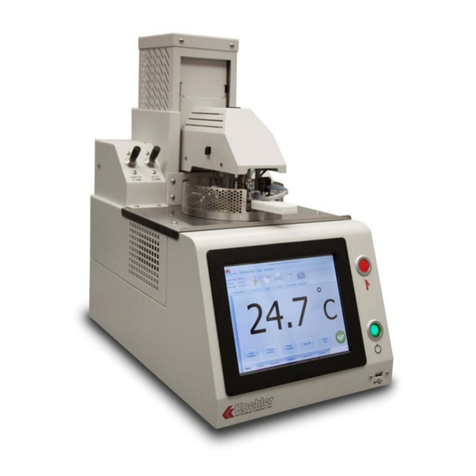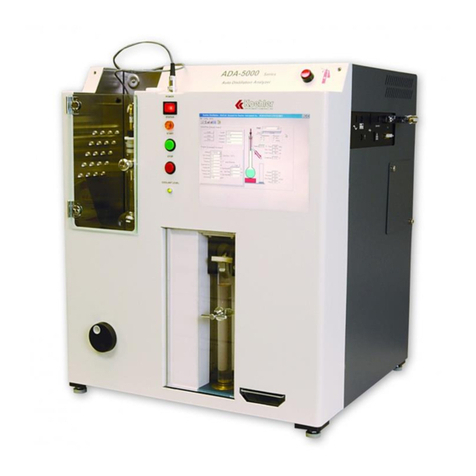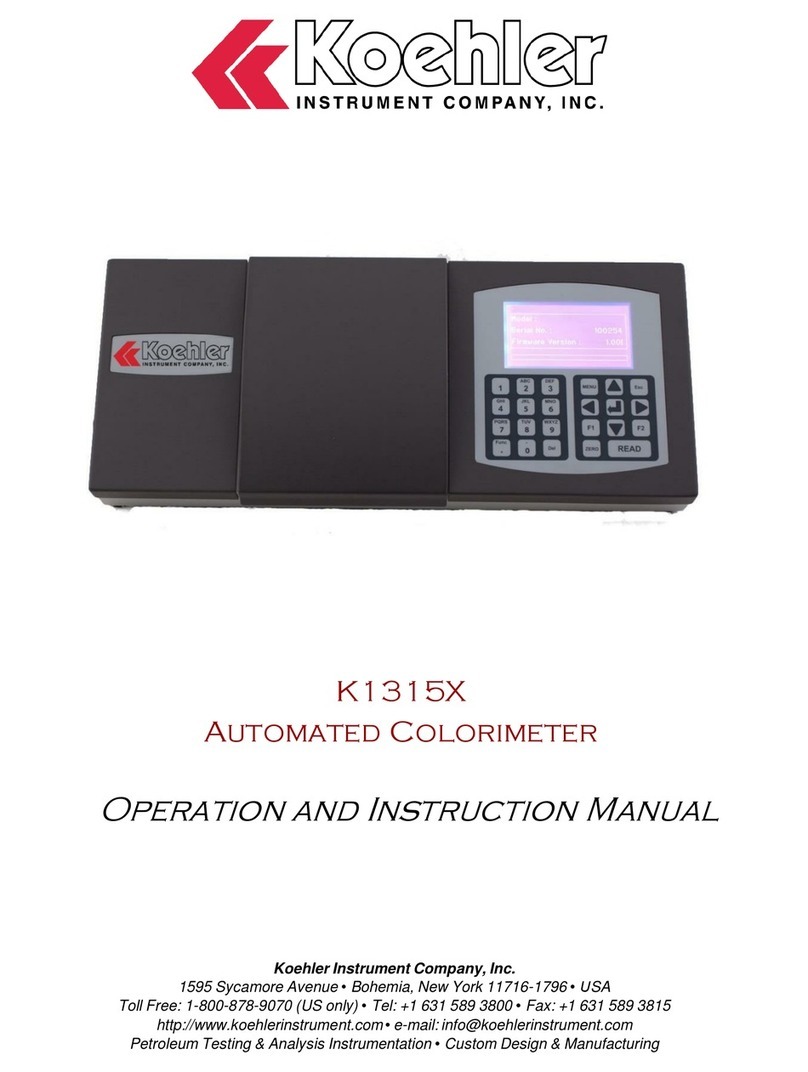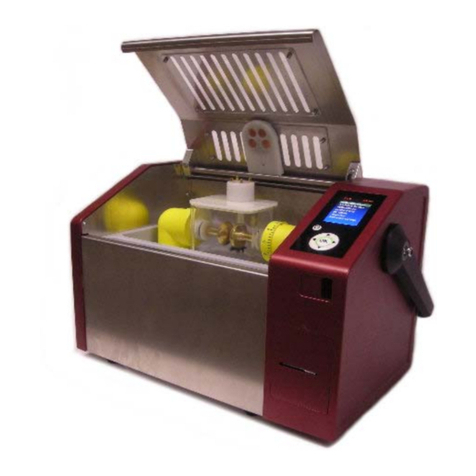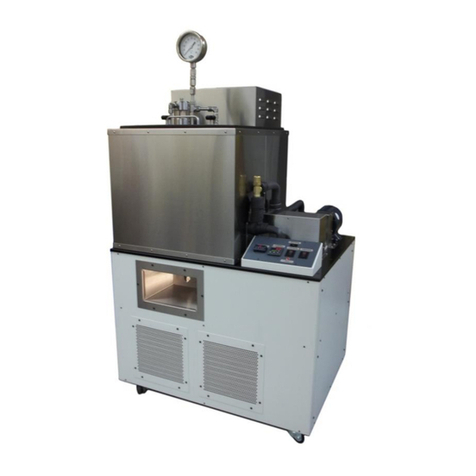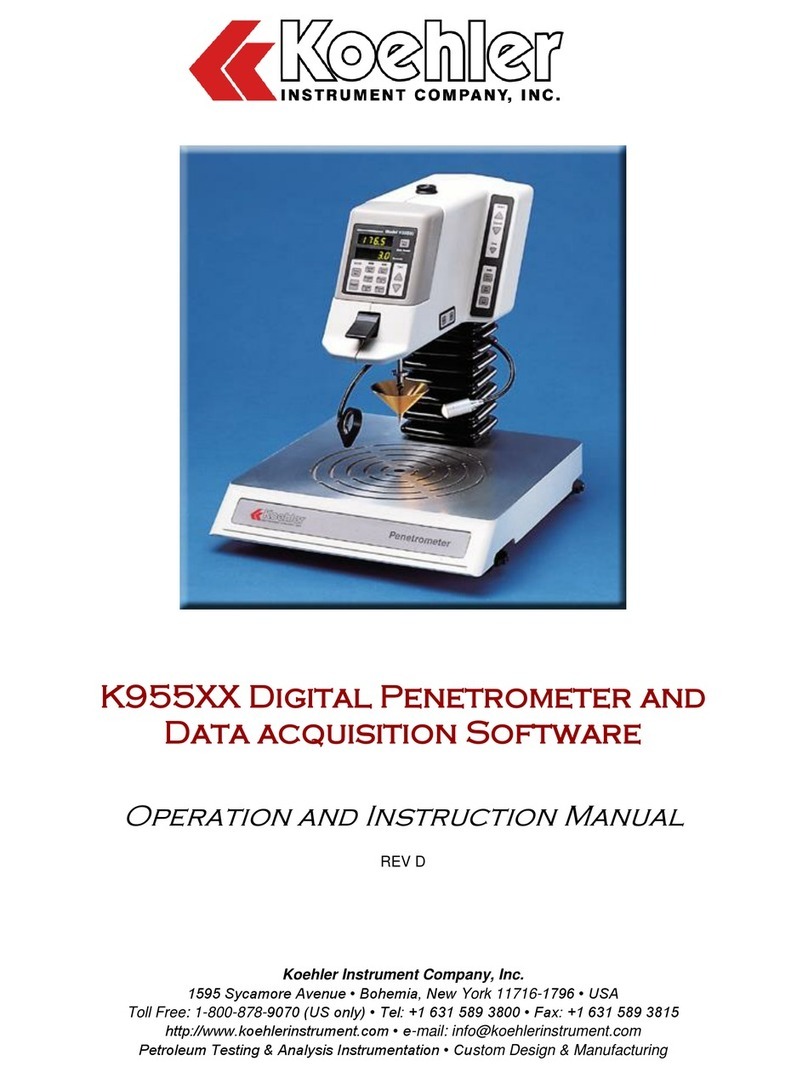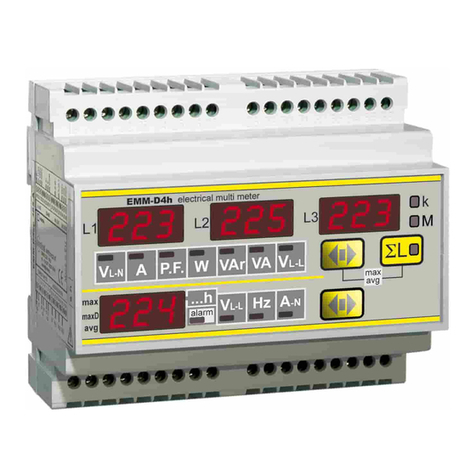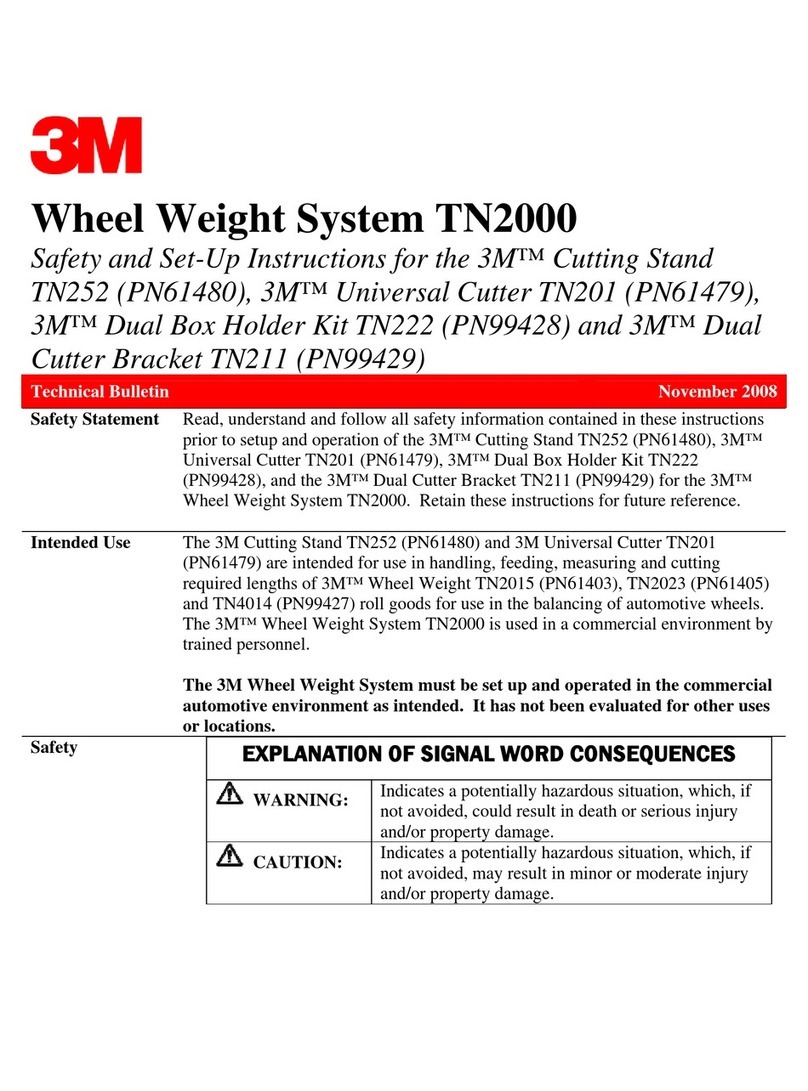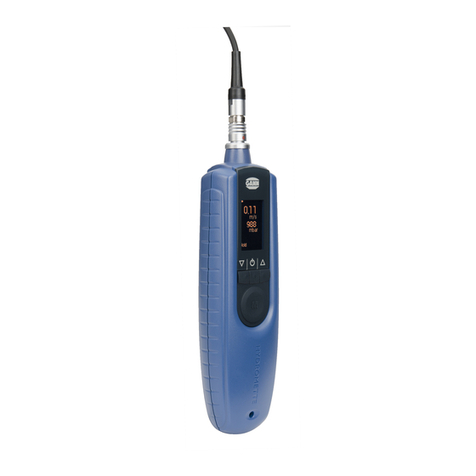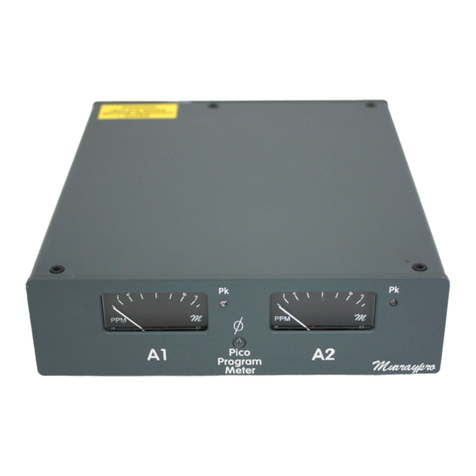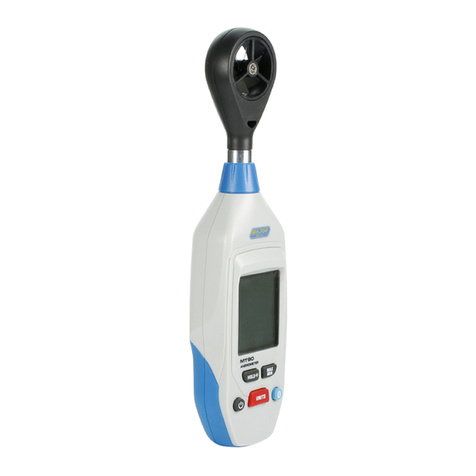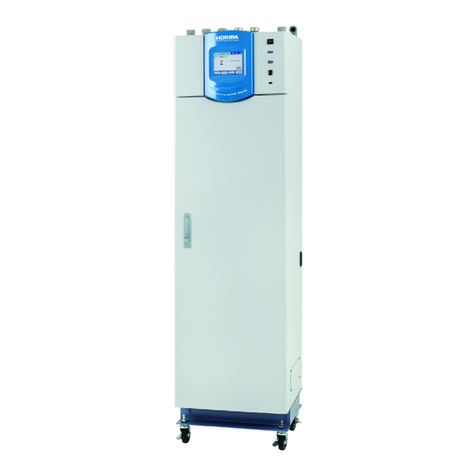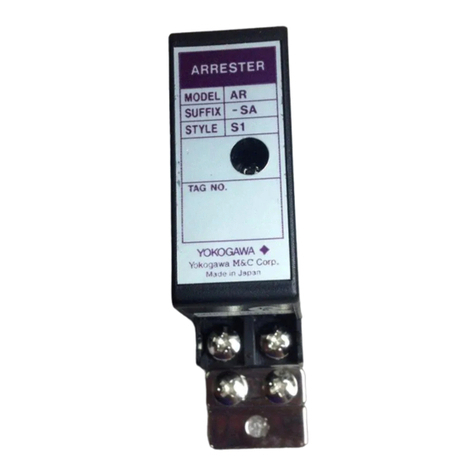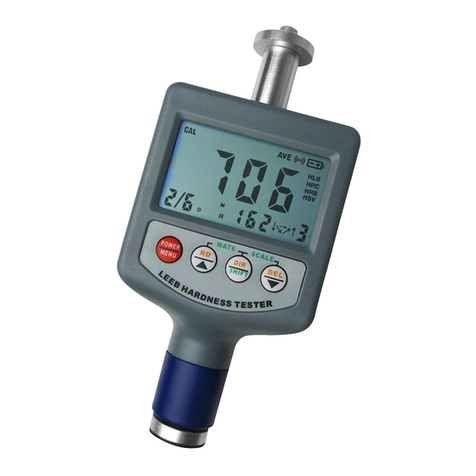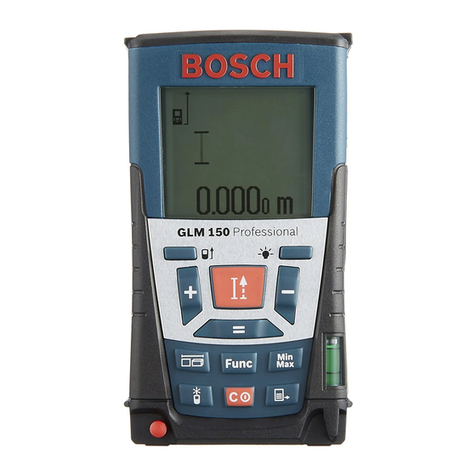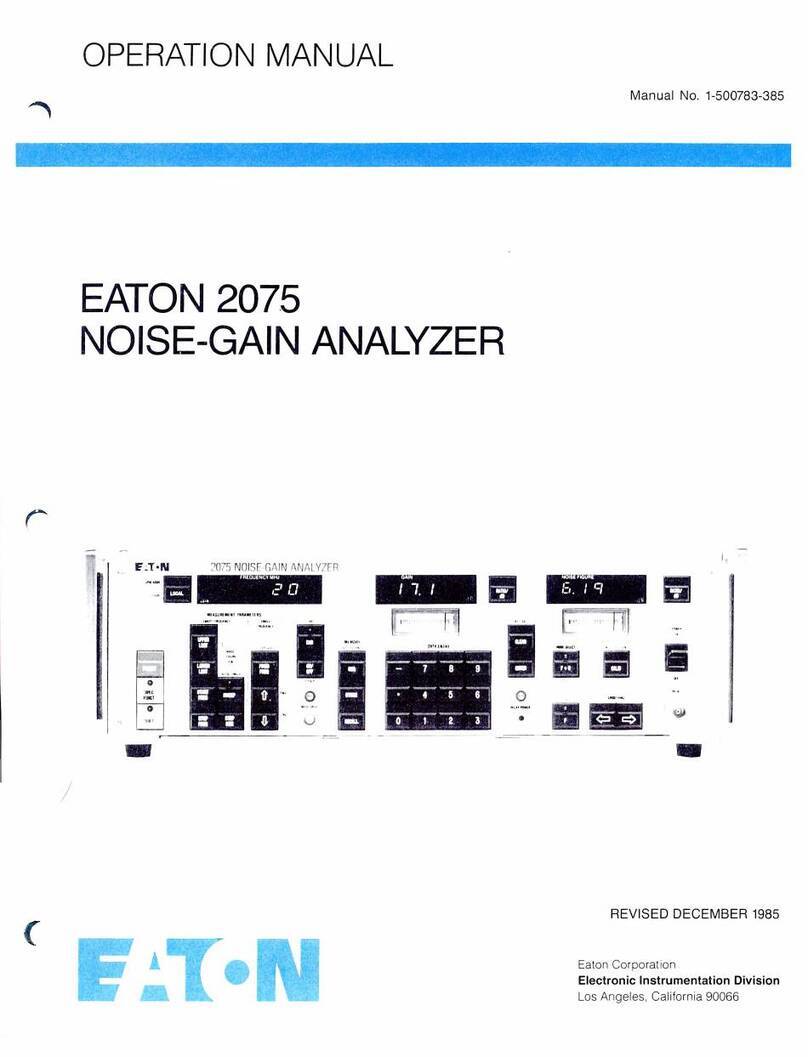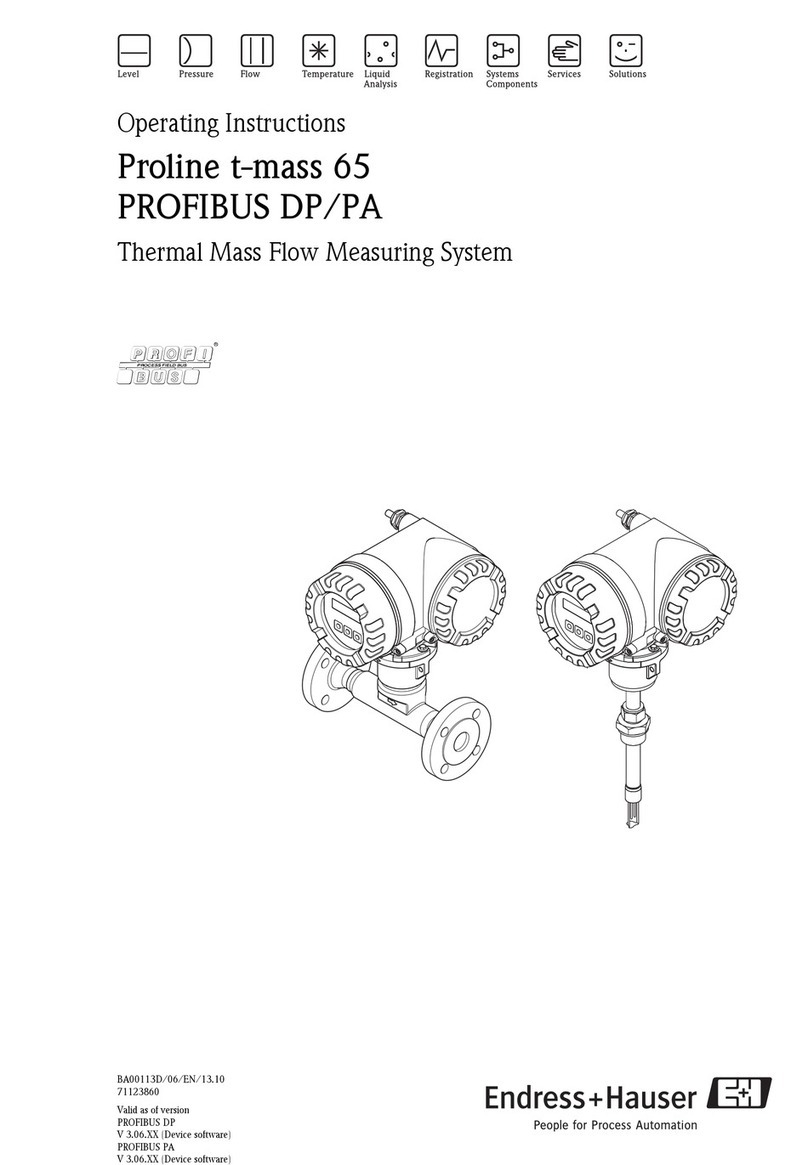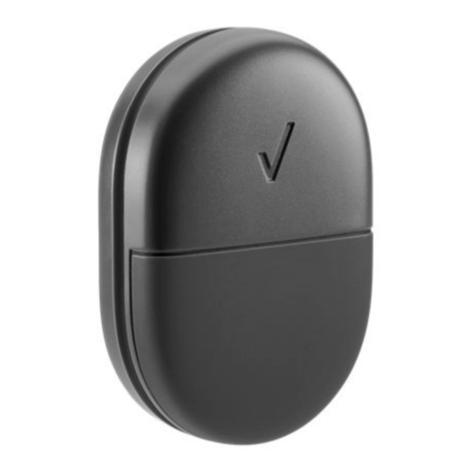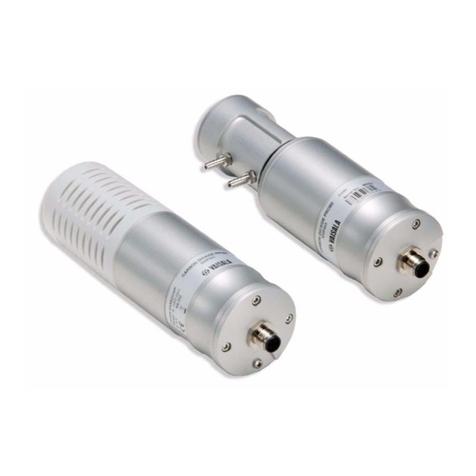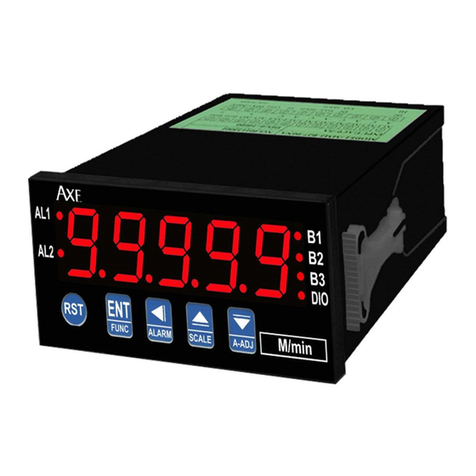Koehler K90601 Guide

Operation and Instruction Manual
Koehler Instrument Company, Inc.
1595 Sycamore Avenue • Bohemia, New York 11716-1796 • USA
Toll Free: 1-800-878-9070 (US only) • Tel: +1 631 589 3800 • Fax: +1 631 589 3815
http://www.koehlerinstrument.com • e-mail: info@koehlerinstrument.com
Petroleum Testing & Analysis Instrumentation • Custom Design & Manufacturing
K90601, K90691
pH Meter


CONTENTS
SECTION
1
Introduction to pH 4
pH measurement &applications 4
pH Value Chart 5
Features 6
Specifications 7
SECTION
2
Unpacking 9
Installation 9
Panel Details a) Front Panel 10
b) Key Functions 11
c) Back Panel 12
d) Electrode Stand Assembly 12
SECTION
3
Using the Instruments 14
Measurement /Function Mode &Operation 15
Appendix –A35
Appendix –B36
SECTION
4
Storage /Care of Electrodes 38
Helpful measurement tips 38
Gel-filled Combination Electrode
Instruction Manual 40
Page 2of 44

SECTION 1
Introduction
Feature
Specifications
Page 3of 44

INTRODUCTION :
pH Meter
KOEHLER herewith offers you the state-of-the-art micro-controller based pH measurement system
with user friendly dialog based easy to use operation, making error free and precise readings.
This
bench-top
pH
meter
is
an
ideal
help
in
every
laboratory
for
routine
measurement
as
well
as
R&D work.
This
instrument
simultaneously
measures
pH,
mV
and
temperature.
A
single
MODE
Key
for
Measurement
/
Function
Selection
makes
system
more
versatile
with
Password
protection
to
stored data.
Facilities of
Individual data memory storage block with scanning on display
for 40 pH Values and
40
mV
Values
and
also
Data
logging
Function.
With
data
logging
function,
user
can
Study
the
Kinetics
of
chemical
reaction.
The
pH
values
recorded
during
Data
Logging
can
be
printed
in the
graphical form with the limit marks.
The
GLP
Approach
for
Calibration
and
data
presentation
gives
more
authentic
Reporting
with
its
print out on plain inexpensive paper. It has two Data report presentations –
(a)
Standard :40 data readings.
(b) GLP :
40 data readings with alphanumeric Sample names and ID numbers.
pH Measurement & Application :
pH
measurement
is
one
of
the
most
common
requirement
of
today’s
laboratories.
Laboratories
involved
with
Environmental
measurements,
Water
and
waste
water,
soil
analysis,
Industrial
boiler/cooler feed water, Pharmaceutical &Bulk drug manufacturing, Speciality and Agro Chemical
manufacturing, Electroplating, Food processing requires to do routine pH measurement for various
aspects such as Pollution control, Quality control, Process monitoring &control etc.
Generally pH
is measured in the scale of
0to 14 pH units, but with the development in technology and growing
needs of the various Industries, pH measurement range is extended
from –2.00 pH to 20.00 pH.
Measurement of pH of any Aqueous Sample solution gives the degree of acidity or alkalinity of the
solution.
Mathematically
pH
is
defined
as
the
negative
logarithm
of
the
Hydrogen
Ion
concentration.
pH
Electrode
measures
the
pH
of
a
Sample
solution
potentiometrically.
When
the
pH
electrode
is
immersed
in
the
sample
solution
the
electrical
signal
gets
developed
across
the
sensing membrane of indicator electrode and reference electrode. Output of the electrode varies
with
change
in
pH
value
with
a
linear
relation
of
59.16mV
/
pH
unit
value.
The
electrode
slope
changes
with
change
in
temperature,
hence
temperature
compensation
is
required.
With
the
Modern pH meters this slope change can be compensated manually or automatically. For precise
pH measurement automatic temperature compensation (ATC) with separate temperature sensor is
needed.
The pH meter
does
Auto
calibration
with
buffer
recognition,
measurement
with
ATC
to
read
the
pH
value @25°C. It also Stores, Protects, Scans &Prints the data with GLP concept.
Page 4of 44

7.0
The
pH
values
of
some
common
industrial
and
household
products/chemicals
are
given
as
follows:
EXTREMELY
ALKALINE
BOTTLE
WASHING
14.0
13.0
COPPER
PLATING BLEACH
12.0
BRASS
PLATING AMMONIA
11.0
MILK
OF
MAGNESIA
10.0
LIME
-
SODA
SOFTENING BORAX
9.0
BAKING
SODA
AQUARIUM SALT
WATER 8.0 SEA
WATER
SWIMMING
POOL WATER BLOOD
FRESH
WATER
AQUARIUM DISTILLED
WATER
MILK
BREWING
PROCESS
NICKEL
PLATING
FOOD
PROCESSING
PICKLE
PROCESSING
PHOTOENGRAVING
EXTREMELY
ACID
6.0
5.0
4.0
3.0
2.0
1.0
0.0
BORIC ACID
ORANGE
JUICE
VINEGAR
LEMON JUICE
BATTERY
ACID
Page 5of 44

FEATURES:
1]Advanced Micro-controller based user friendly state-of-the-art product design.
2]Complies to USP and DIN Standards.
3]Sleek molded cabinet with Alphanumeric splash-waterproof polyester keyboard with
soft keys.
4]User interactive software in dialog mode for ease of operation with protection against
invalid entries.
5]20 X2Line Back lighted LCD Display .
6]Simultaneous Measurement of
pH, mV and Temperature. SCAN Key for displaying the
stored pH or mV
values with Reading No. and Sample name.
7]Non volatile memory storage of,
a)
40 pH and 40 mV
readings with temperature in pre-selected GLP or Standard format.
b)
24 data memory readings of pH, temperature and time in data logging mode.
c)
Calibration data for pH &mV(relative).
8]MEM CLEAR Key to clear the memory buffer block within the selected measurement mode.
9]Calibration of instruments with User selected calibration standard.
10] Password Protection for Calibration data and stored readings
11] Calibration data with date and time Stamp for authentication.
12] Calibration reminder alarm.
13] Alphanumeric entries of
Sample Name, Identification Number for authentication.
14] Automatic/ Manual Temperature Compensation mode with selection of ATC temperature
at 20°C or 25°C. Automatic Temperature Compensation by PT100 Temperature sensor
Range 0to 100°C.
15] 3point Calibration with Auto Buffer Recognition.
16] Input Stability Indicator for reproducible results.
17] Built-in Real Time Clock (RTC) for time display and on report printout.
18] Report Format:- Complying with GLP requirements:
a)
Report giving the selectable 40 Readings of pH and mV.
b)
Report of Last Calibration with Date &Time.
c)
Report of pH Logged data with graph (optional)
and
d)
Online report of individual pH or mV entered readings
and Calibration data.
19] Factory entered CUSTOMER NAME and INSTRUMENT SR. No. on report printouts for
authentication.
20] Probe Check Mode for checking Electrode Aging.
21] Error indication helps user to trace the problem.
22] Audible Beep indication during Valid Key operation.
23] Optional
:- Data Logging function with Graph pH Kinetic study.
Page 6of 44

SPECIFICATIONS
pH:
pH Range :
-2.00 to 19.999
Resolution :
0.001 pH
Relative accuracy :
+/-0.002 pH
Slope :
80% to 120%
Sensor :
Combination pH electrode /Two separate Electrode
Calibration :Auto-calibration with buffer recognition and printout of
Calibration report.
Millivolt
MV range :
0to +/-1999.9 mV
Resolution :
+/-0.1 mV
Relative accuracy :
+/-0.2 mV
Temperature
Temperature range :
0to 99.9
°
C
Resolution :
0.1
°
C
Relative Accuracy :
+/-0.2
°
C
Sensor :RTD PT100
Display
:20 X2Line Back lighted LCD Display.
Keyboard
:
Alphanumeric splash water-proof polyester soft keys.
Report
format
:a) Report of selected pH &mV readings with temperature.
b) Calibration Report.
c) Data table &Graph (Optional)
Data
Storage
:Non-Volatile memory.
Input
:
1BNC, 1ATC -PT100
Input
Impedance
:
>1012 ohms.
Output
:- Printer (Parallel ), with selectivity for DMP or Deskjet,
PC–RS232(Optional)
Electrode
Diagnosis
:Yes.
Environmental
Operating
Conditions
:-
a) Operation :
Indoor
b) Temperature :
Ambient to 45 °C
c) Relative Humidity :
5to 90% non-condensing.
Power
requirement
:
230 Vac (+/- 10%) /50Hz.
Page 7of 44

SECTION 2
Unpacking
Installation
Panel Details
Page 8of 44

UNPACKING
After unpacking
you
will
find
following
parts .
KOEHLER
–
pH Meter, Microcontroller based main unit (115/230 Vac, ±10% /50/60Hz)
pH Electrode -1No.
RTD PT100 Temperature sensor probe. -1No.
Electrode stand -1No.
Operator’s Instruction Manual. -1No.
Spare Fuse -750mA -2Nos.
INSTALLATION
1.
REQUISITES
Leveled Platform/Table with nearby115/ 230Vac, 50/60Hz/ 5Amp. Power socket. (Ensure the Input
Power supply is within +/-10% tolerance ).
Make arrangements for liberal amount of
fresh distilled water and
standard
buffers viz 7.00,
4.00 and 9.00 or 10.00 pH along-with clean &dry glass
beakers for all sample measurements.
1~2gms. KCL or 0.1N HCL for pH Electrode activation. Refer pH electrode maintenance
section.
Tissue paper roll and Suitable container for Waste disposal.
2.
SETTING UP THE METER
Carefully remove the meter wrapping and the accessories from the packaging.
Place the meter on the table where it will be used for measurement purpose.
Align the unit for complete
view of
LCD
Display by opening the Tilt Legs.
3.
ASSEMBLING
THE
pH
ELECTRODE
STAND
Get the metal rod, flat round plate &holder supplied with the unit.
The pH Electrode Stand is made by screwing the metal Rod onto the round base plate firmly
by tighten the check-nut on the plate for sturdy assembly.
Slide the Electrode holding clamp on the rod by pressing it.
Carefully push the Electrode and temperature probes in the holder on the clip.
Place the assembly on flat horizontal plane besides the meter.
4.
PRINTER
INTERFACE CONNECTIONS
Place the printer on the suitable side of the meter.
Connect the printer data cable to the 25 pin D-shell connector provided on the back panel.
Refer Page No 12.
Adjust the printer dip switch settings as shown in.
Appendix -A
Ensure that printer is loaded with paper.
Page 9of 44

5.
SWITCHING
‘ON’
THE
METER
Connect the pH Electrode and Temperature Sensor to appropriate socket /Connector
to back panel of
the meter .Refer Page No. 12.
Carefully remove the cap from end of the Electrode (This cap is used in shipping to protect the
electrode bulb and also to keep the electrode in moist condition until put into use)
Check
the
electrodes
internal
reference
filling
solution
level,
if
necessary
level
it
with
recommended solution (3M KCl ).
Place the electrode into electrode storage solution, pH 4buffer or saturated KCL solution.
Connect the
power
cord
to asuitable
230 VAC/50 Hz
stabilized
power
supply
with
proper earth connection.
Switch ‘ON’
the meter .The 20
character ,2line display
will
read as follows.
KOEHLER
INSTRUMENTS
Version x.xx
KOEHLER
INSTRUMENTS
pH METER
------------------------------------------
PANEL
DETAILS
PICO –pH meter has two functional Panels, for which user has to get familiar with.
Front
Panel
-
Consisting
of
Name
plate,
20
charactor X
2line back
lighted LCD display and
Splash waterproof
polyester keyboard (20 keys ).
Back
Panel
-
Consisting
of
BNC
connection
with
4mm
banana
socket
for Combination /
two
seperate
pH
Electrode,
5-pin/M
-
shell
connector
for
RTD
Temperature
sensor,
25-pin/F
-
D
type connector for Printer.
1.
Front
Panel
–
Keyboard.
7
STU
4
JKL
1
ABC
0
-
.
/
8
VWX
5
MNO
2
DEF
GLP
9
YZ
-
6
PQR
3
GHI
CE
BACK
MEM
CLEAR
RESET
CAL
FWD
TEMPCO
SCAN
PRINT
MODE
ENTER
Page 10 of 44

Key
functions:
L.H.S. Keys: Alphanumeric Dual Function (A~Z ,1~9 ), Zero (0) with Dash (-), Dot (.),Slash(/),
decimal point (.)and Clear Entry( CE )Key.
R.H.S. Keys: Functional Keys and RESET key.
Description of Functional Keys:
MEM
CLEAR
RESET
CAL
FWD
TEMPCO
SCAN
PRINT
MODE
ENTER
CE
BACK
GLP
:To Clear
the Stored Readings /Calibration data of the selected
Mode from meter Memory.
:To Reset the meter.
:To perform CALIBRATION within the selected Operating Mode.
:
This key has dual function, (a) To check the reading in scan mode and
(b) To select Auto /Manual temperature compensation.
:
To SCAN /read the stored readings with the help of FWD/TEMCO key.
:
To Print the Stored Readings /Calibration data of the selected
Mode from meter Memory with GLP format.
:
To Select Meter Operating Mode.
:
To Acknowledge the entered value.
:
To clear the wrong entry &to go backward for previous display screen.
:To Select the GLP or Standard Mode between sample measurement &storage.
GLP
mode
:-
In this selection, the Sample related detail such as
Sample
Name
and
ID.
NO.
can be entered after each Measurement.
Standard
mode
:- In this selection, Direct Measurement can be done
with-out entering the Sample related details.
Page 11 of 44

2.
Back
Panel
–
details
BNC
Connector for
pH indicating
/Combination
Electrode
5Pin Shell
Connector for
PT100-RTD
Temperature
probe
DC Power
Adapter Input No
Connections
25 Pin DType
Connector for
Printer
9Pin DType
Connector for
PC Interface
4mm Banana
socket for
Reference
pH Electrode
Electrode
Stand
and
Holder
Assembly
Electrode
Holder
pH Electrode
&Temperature
Sensor
Stand Arm
Wing Nut for
locking Arm
Base
Plate
Page 12 of 44

SECTION 3
Using the Instrument
Measurement/
Functional Modes
Page 13 of 44

USING THE INSTRUMENT :
pH Meter
After the Meter is powered ON, Only two keys are active, i.e. RESET and MODE (page 11).
RESET key is used to initialize the Meter. By pressing the RESET key Meter gives Beep and
Display reads, KOEHLER
INSTRUMENTS
Version x.xx
KOEHLER
INSTRUMENTS
pH METER
Selectivity of data transfer to PC/Printer for pH
To select PC/Printer,
Display reads,
KOEHLER
INSTRUMENTS
pH
Meter
Press,
PRINT
Press,
ENTER
Enter Password
****
Data Transfer
1) Printer
2) PC
Enter Password (Min. 4digit &Max. 8digit)
To transfer data to Printer, Press ‘1’ or to transfer data to PC, Press ‘2’.
Press,
1
ABC
Press,
1
ABC
Select Printer
1) DMP
2) Deskjet
pH Mode
Press ENTER or MODE
To select resolution of pH readings,
Display reads,
KOEHLER
INSTRUMENTS
pH /CON
Meter
Press,
SCAN
Press,
ENTER
Enter Password
xxxx
pH Resolution
1) 1
2) 2
3) 3
Enter Password (Min. 4digit &Max. 8digit)
Say upto 3digit.
Press,
3
GHI
pH =+ A.BCD R1
I
mV =-PQR.S
27.0°C
MODE Key is important key, as it allows the user to select the Operating and Measurement
Mode.
Page 14 of 44

2press,
3press,
Press ENTER or MODE G1
MEASUREMENT / FUNCTIONAL MODES:-
The modes can be selected by pressing MODE key repetitively till desired mode/function is
displayed and later acknowledged by pressing ENTER key.
Please note the Second Line of the display shows the Active Keys. The very first Mode Displayed
is, pH Mode.
pH Mode
Press ENTER or MODE
ENTER
A1 Refer page 16.
nd
mV Mode
Press ENTER or MODE
ENTER
B1 Refer page 26.
rd
Data Log. Mode: Press
ENTER /MODE /PRINT/GLP
4th press,
Probe Check Mode
Press ENTER or MODE
5th press,
Calibration Reminder
Press ENTER or MODE
6th press,
Date &Time Mode
Press ENTER or MODE
7th press,
(Optional) C1
D1
E1
F1
Refer page 29.
Refer page 31.
Refer page 31.
Refer page 33.
Password
Mode Refer page 34.
After desired Measurement /Functional Mode is displayed and then Enter Key is pressed to
confirm the selection .
Page 15 of 44

SCAN
PRINT
MEM
A. pH Measurement :-
Before starting the
pH measurement, Ensure the Instrument is Setup properly as mentioned
on Page 9&10.
Select the pH Mode,
Refer page no.15
The Instrument Display reads,
A
Wait
!
Stabilising ..pH
=+ A.BCD R1
N
mV =-PQR.S
27.0°C
“Wait
Stabilising”
–
indicates,
the instrument is checking Electrode signal Stability and once
the signal is steady it shows the measured pH, mV and temperature.
Display
meaning
,
Measured
pH value
Electrode
Potential (mV)
Operating Mode
mark -Standard
No mark –GLP
pH
=+ A.BCD R1
N
mV =-PQR.S
27.0°C
Reading No.
Calibration Status
N
–Not Calibrated
s
–Standardized
a
–2-pt, Acidic Side.
b
–2-pt, Basic Side.
I
–3-pt Calibrated
Sample Temperature
(ATC /Manual Comp.)
Before performing the pH measurement,
FWD
I.
Select the Temperature Compensation Type by
pressing
TEMPCO
II.
Standardise &Calibrate the Instrument and pH Electrode press
key.
CAL
key.
Other Active Keys are
CLEAR
MODE
The function of the above keys are described at later in this manual.
Page 16 of 44

I.
Selecting Temperature Compensation: TEMPCO
The user has two options for temperature selection at which the automatic Temperature
compensation is to be considered during Calibration &measurement.
ATC
at :
1
1) 25°C 2) 20°C
For
e.g
-
Compensation
with
respect
to
25°C
Press
‘1’
OR
for
20°C
Press
‘2’
,
Press Display
1
ABC
ATC
at :
1
1) 25°C 2) 20°C
Press
ENTER
Display
Select TEMPCO Mode:
1) Auto
2) Manual
For
Automatic
Temp.
Compensation,
Press Display Press
1
Select TEMPCO Mode:
1
ABC
1) Auto
2) Manual
ENTER
A1
For
Manual
Temp.
Compensation,
measure the Solutions Temperature with thermometer and
then enter the correct temperature value.
say
@
25.0
°C
user
entered.
Press Display Press
2
DEF
Select TEMPCO Mode:
2
1) Auto
2) Manual
ENTER
Display Press
Enter Temp (°C )=
Press
2
DEF
5
MNO
GLP
0
-
.
/
Enter Temp (°C )=
25.0
ENTER
A
Page 17 of 44

Offset =XXXmV
ENTER
Enter password
DEF
ENTER
Perform
Stand.
II.
Calibration of Instrument and pH Electrode: CAL
Press Display
S1= XXX S2 =XXX
CAL
Press Display
Enter
Password
*******
(Min.4digit &Max. 8digit) Ref. Pg. 34
G1 Calibration
Mode:
1) Stand. 2) Calib.
As aGLP Sequence the User should Perform the Standardisation first and then Calibrate using
either Acidic or Basic Buffer.
The Instrument takes care and guides the User to perform Standardisation, if Direct Calibration
option –2) Calib. Is selected under following conditions. a) When there is no previous Calibration
data is stored /Memory is Cleared. b)During fresh calibration.
2
Calibration
Mode:
2
1) Stand. 2) Calib.
Standardisation @ 7.00pH Buffer
Ensure the Electrode is connected to instrument and was properly Activated &stored.
Ensure the Temperature Sensor is connected to instrument.
Rinse the pH electrode with distilled water 2~3 times ,remove the excess water by soaking it with
tissue paper
and insert
the pH electrode and RTD
in 7.00 pH
beaker.
(NOTE :For proper
conditioning and storage of electrode, refer Section 4)
Press
1
ABC
Display
Calibration
Mode:
1
1) Stand. 2) Calib.
Press
ENTER
H1
Use Buffer (6.8 –7.2 )
Enter pH =
Say 7.00
7
DEF
.
0
-
.
/
0
-
.
/
Use Buffer (6.8 –7.2 )
Enter pH =
7.00
ENTER
Wait
!
Stabilising ..pH
=+ A.BCD
Enter.
mV =-PQR.S
27.0°C
ENTER
Page 18 of 44

Enter pH =
4.00
ENTER
pH =+ A.BCD
If Buffer 7.00 pH and Electrode Offset If Buffer 7.00 pH and Electrode Offset
is within 30 mV. Is out off limit (30 mV ).
Calibration Over.
Offset =-
000.0
Calibration :
1)Y
2)N
Incorrect
Buffer
or
Probe
Faulty.
P
To Perform Calibration
To end calibration with
only Standardisation,
1
ABC
Calibration :
1
1)Y
2)N
2
DEF
Calibration :
2
1)Y
2)N
Calibration cont.. If Printer not connected,
ENTER
ENTER
Printer Not Ready
!
Q
Calibration
Report
is
Display reads
with small ‘s’
printed
with
only
on RHS top line
Buffer <6.5
or
>7.5
Enter pH =
Standardisation
Value
pH
=+7.000 R1
s
mV =-PQR.S
27.0°C
Here Instrument provides option for the user to Start either with Acidic side buffer (<6.5 pH )or
Basic side buffer (>7.5 pH ).
Say, To Perform Calibration on Acidic Side with 4.00 pH buffer,
Now Remove the pH electrode from the 7.00pH solution and rinse it thoroughly with distilled
water,
soak the excess water with tissue paper. Insert
the pH electrode and RTD
in beaker
having 4.00 pH buffer.
To Perform Calibration enter the Acidic Buffer Value 4.00 using the keyboard similar to entries
made during standardisation with pH 7.00 and press ENTER,
Buffer <6.5
or
>7.5
Enter.
mV =-PQR.S 27.0°C
ENTER
Instrument
checks
the
Slope
of
the
Electrode
obtained
(
Limit
=
80
%
~
120%
)
Page 19 of 44
This manual suits for next models
1
Table of contents
Other Koehler Measuring Instrument manuals
